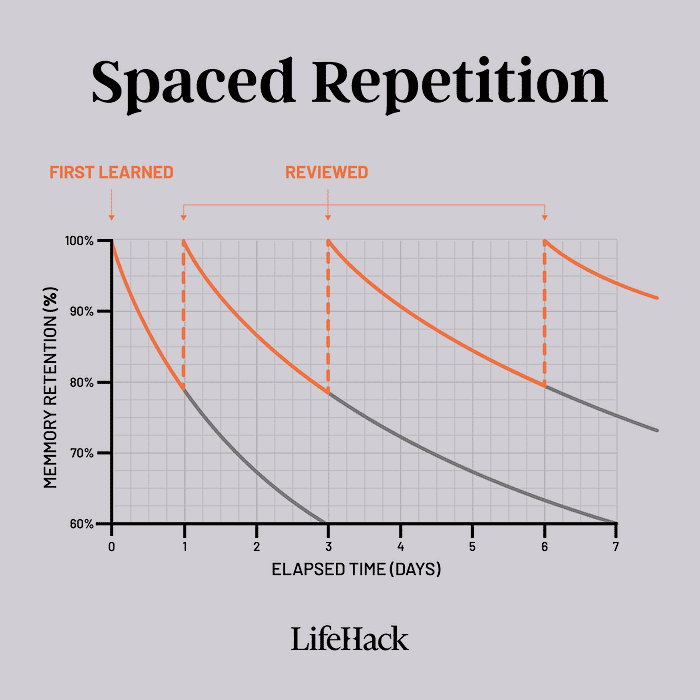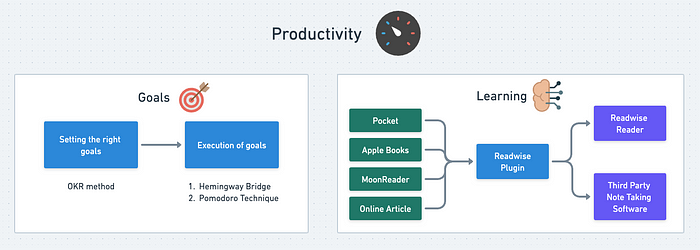High productivity, or high efficiency as it is defined, means accomplishing more within a fixed period of time. Personally, I am a strong advocate of productivity, which has been ingrained in me from a young age. I believe that being more efficient is the key to staying ahead in life.
While the primary motivation behind striving for greater productivity is to accomplish more and achieve success, there is another aspect of my personality that thoroughly enjoys exploring different methods to streamline my life and eliminate unnecessary time-wasting activities.

Today, I would like to share with you a few of my personal productivity tips that have helped me achieve more. The following is a brief outline of what you can expect in this article:
By incorporating these strategies into your daily routine, you can make significant strides in improving your productivity and accomplishing more in your personal and professional endeavours.
First and foremost, the ultimate purpose of productivity is to accelerate the achievement of personal goals. It is crucial to have a clear and concrete goal in mind, as there is no value in being faster if you are moving in the wrong direction.
Personally, I have found the OKR (Objectives and Key Results) method to be highly effective in setting goals and tracking progress. My introduction to this approach occurred during my involvement in the annual planning process at Ant Group, where I was captivated by its efficacy.

When establishing my goals, I typically adopt a timeline of 3–5 years. This duration allows for significant milestones to be reached, while avoiding excessive uncertainty that may arise with longer timeframes, leading to goal adjustments.
Here’s what I will do when I am setting up my goals:
The cycle of Execute, Measure, and Adjust becomes a weekly routine, allowing for continuous improvement and adaptation as needed. This iterative approach serves as a cornerstone of my productivity journey.
In the preceding section, we discussed the importance of establishing appropriate goals and maintaining regular progress tracking. This segment on time management delves deeper into the realm of effective execution and offers insights on overcoming inertia and cultivating motivation. Personally, I have found two techniques to be particularly impactful:
Two useful techniques that are very effective for me.

Pomodoro Technique is likely familiar to many of you. This concept revolves around structuring your work into 25-minute sessions, followed by 5-minute breaks. The main idea behind this technique is to break down larger tasks into smaller, more manageable chunks, thereby promoting a sense of progress. Personally, I have found this approach incredibly beneficial. Whenever I feel the temptation to procrastinate, I remind myself that I only need to focus for 25 minutes before enjoying a short break. This mindset shift has helped me overcome psychological barriers and initiate work on various projects.

Hemingway Bridge which I discovered through the book “Build a Second Brain,” focuses on listing the tasks for the next work session. Many individuals struggle to begin their work, but once they enter a state of flow, they become more inclined to accomplish tasks. By jotting down the upcoming tasks during the current session, you leverage your existing momentum to facilitate a smoother start in the next session. This technique harnesses the power of continuity and reduces the inertia often associated with initiating work.
Implementing these techniques has greatly improved my productivity and motivation levels. They have become valuable tools in my workflow, enabling me to overcome initial resistance and maintain a consistent and effective work rhythm.
As an avid reader with a diverse range of interests, I often find myself struggling to retain the knowledge I acquire and effectively apply it in my daily life. Thankfully, I stumbled upon a remarkable tool called Readwise, which has become an invaluable asset in organizing my notes and highlights. Allow me to highlight some key features offered by Readwise:

In this article, I’ve shared my three most impactful productivity areas that have significantly enhanced my life. The diagram below provides a concise overview of how these interconnected elements work together harmoniously.

If you have any personal productivity tips, favourite books, enlightening videos, or valuable resources to share, please don’t hesitate to leave a comment below. I’m eager to learn and discover fresh perspectives from all of you, as collaborative growth is a powerful force.
Thank you sincerely for taking the time to read this piece, and until we meet again, stay inspired and productive!
Find out if MentorCruise is a good fit for you – fast, free, and no pressure.
Tell us about your goals
See how mentorship compares to other options
Preview your first month
